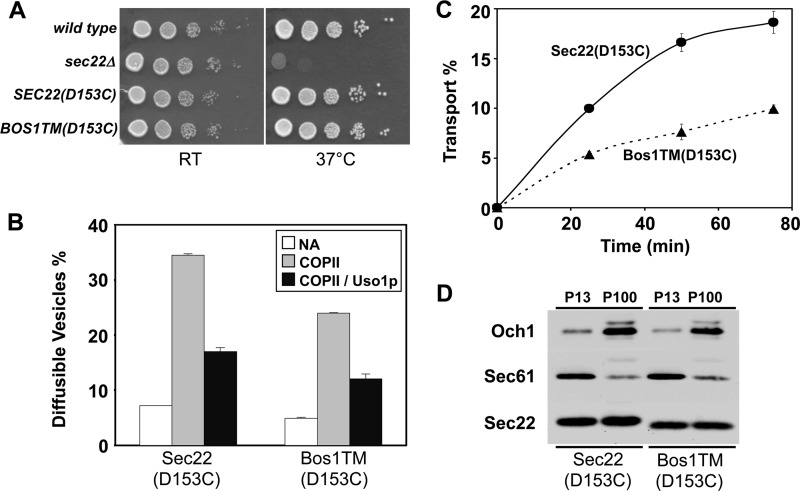FIGURE 11.
Sec22-Bos1TM membranes display modest defects in budding and transport. A, SEC22(D153C) and SEC22-BOS1TM(D153C) suppress sec22Δ temperature sensitivity. Serial dilutions of WT (CBY740), sec22Δ (CBY773), and sec22Δ (CBY773) expressing Sec22(D153C) or Sec22-Bos1TM(D153C) strains were spotted on YPD plates and incubated at 25 and 37 °C. B, membranes expressing Sec22-Bos1TM display budding defects in vitro. Washed semi-intact cell membranes were prepared from strains expressing Sec22(D153C) or Sec22-Bos1TM(D153C). Membranes were mock treated (NA), incubated with COPII proteins or COPII proteins plus Uso1 at 23 °C for 30 min, and freely diffusible vesicles were quantified to assess levels of vesicle budding and tethering. C, membranes expressing Sec22-Bos1TM(D153C) display in vitro transport defects. Washed semi-intact cell membranes were incubated with COPII, Uso1, and LMA1 proteins to reconstitute transport. Over a time course at 23 °C, the amount of Golgi-modified [35S]gpαf was measured to determine transport efficiency. Error bars represent the range of duplicate determinations. D, subcellular fractionation of lysed spheroplasts to enrich ER (P13) and Golgi (P100) membranes followed by immunoblot for Sec22 in addition to Sec61 (ER) and Och1 (Golgi) markers.

